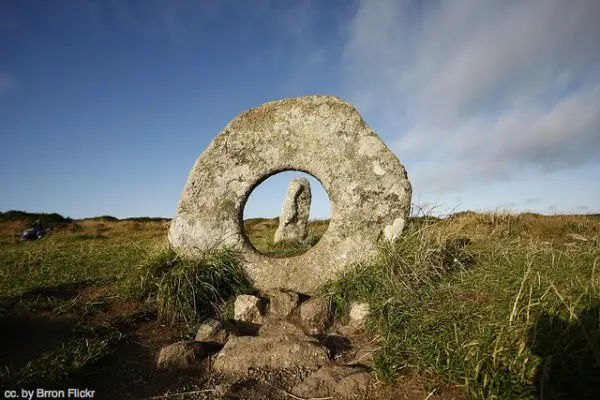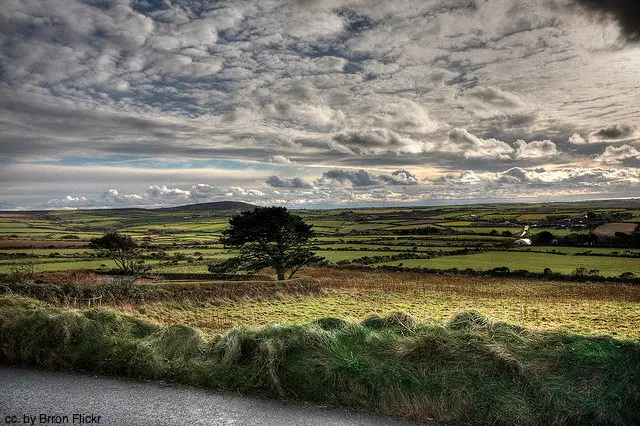Steeped in legend and history, Cornwall offers sun, sea and sand, as well as great food and a character distinct from anywhere else in England.

Geography
The English county of Cornwall lies on the western coast of the country and has 697 kilometers of coastline — the longest stretch in all of Great Britain. The county takes the form of a peninsula and has two distinct coasts. The north coast lies on the Celtic Sea and has a wild, wind-swept nature and rugged appearance thanks to its massive Atlantic-facing cliff faces. The southern coast, on the other hand, is more sheltered and is known as the “Cornish Riviera” for its year-round mild climate.
History
This part of England has a unique character owing to its history as an ancient kingdom and as one of the Celtic nations. Up until 250 years ago the Cornish language was still spoken here and the Cornish people to this day retain a distinct dialect. Currently the Cornish national movement seeks a greater autonomy for the region within the United Kingdom, and requests a greater recognition of the Cornish people as a separate ethnic identity.
The region of Cornwall is also inextricably bound to its nautical history and the sailors, fishermen and pirates that made the area their stomping ground. Here you will find a bounty of smuggler’s coves, tiny fishing villages and seaports. Today people come here explore the wild moorlands, surf, scuba dive or to relax on the long sandy beaches.

Things to do in Cornwall
Hit the beaches
Cornwall has over 300 beaches to choose from, all with clear water and beautiful surroundings. One of the best south-coast beaches is Gyllynvase, just outside of the centre of Falmouth, which is also home to the National Maritime Museum and a lively nightlife scene. Bude, in the northern part of Cornwall, offers several good beaches, including the beach at Widemouth Bay, which is historically associated with smugglers and is now popular with swimmers and surfers.
Surfers from near and far tend to head for Newquay, the surfing capital of England. The town’s seven miles of beaches include Fistral Beach, which has the best breaks in the area and hosts several surfing contests throughout the summer months. Beginners can also seek instruction and rent or buy equipment from one of the surf schools in town.
Other attractions
The Eden Project, a few miles outside of St. Austell, is home to the world’s largest greenhouse and two artificial biomes — one tropical and one Mediterranean — that show visitors the diversity of plant life across the world. You can see a huge variety of plant life from olive trees to cacti, bamboo, tea and tobacco. The Eden Project is also the site of an annual music festival called the Eden Sessions, and regular workshops and lectures on environmental issues are held there.
The cliffside ruins of the medieval Tintagel Castle are situated on the northern coast of the peninsula of Tintagel Island. The castle is heavily associated with Arthurian tales, with local legend claiming that King Arthur was born there.
You can walk along the coast to Land’s End, the most westerly point of England. You can also get to the Isles of Scilly, popular with birdwatchers and 28 miles off the coast of Cornwall, by air or sea.

Eat
While in Cornwall do not miss the chance to try some of the local food. Cornwall is most well-known for its Cornish pasties (pastries that are usually filled with meat and potatoes) and for its fudge, clotted cream, ice cream and cheese. The region’s location also makes it a great place to eat fresh seafood, and celebrity chefs Jamie Oliver and Rick Stein both run seafood restaurants here.
Where to stay
The small picturesque town of St. Ives has a history as an early 20th century artist’s colony. Today it is the home of the Cornish outpost of the world-renowned Tate Modern art museum. You will also find cobblestone streets, small art galleries and cafés, and good swimming conditions at Porthmeor Beach.
The small fishing port town of Padstow has some good beaches, including the surfer-friendly Constantine Bay and several excellent seafood restaurants. Padstow is also the home of the annual ‘Obby ‘Oss May Day festival, which has been celebrated for hundreds of years.
The villages of East and West Looe are on opposite sides of a river and connected by a bridge. The Looe area is known for its fresh seafood and offers a good choice of accommodation, pubs, restaurants and beaches. Looe also has a monkey sanctuary, home to woolly and capuchin monkeys, which you can visit in spring and summer.
[box type=”info”]
Featured: Accommodation options
Discover options for holiday rentals in the Lake District, or talk with Owners Direct about how they can help you with accommodation for your stay.[/box]
[button link=”https://indietravelpodcast.com/europe/” size=”small” color=”orange”]Read more about Europe[/button][button link=”https://indietravelpodcast.com/europe//england/” size=”small” color=”orange”]Read more about England[/button][button link=”https://indietravelpodcast.com/europe/scotland/” size=”small” color=”orange”]Read more about Scotland[/button][button link=”https://indietravelpodcast.com/europe/wales/” size=”small” color=”orange”]Read more about Wales[/button]
This page by Karen Dion.
